Last Updated on October 29, 2025 by teamobn
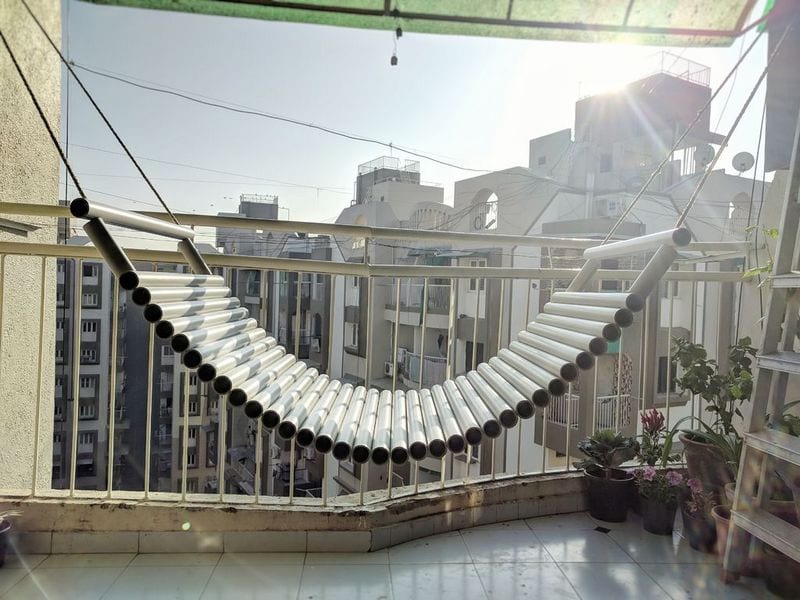
PVC is an excellent material for a wide range of projects due to its unique properties. It is flexible yet durable, making it ideal for applications such as plumbing and electrical wiring. Additionally, PVC is relatively inexpensive compared to other materials, making it an excellent option for budget-conscious DIYers. Whether you’re looking for an affordable material for your next project or simply want a versatile option, PVC is a great choice – like this PVC Hammock!
Hammocks are a great way to relax and enjoy the outdoors. Various types of hammocks are available on the market, but they all serve the same purpose: a place to rest, read a book or take a nap. Hammocks are available in a variety of materials, including cotton, nylon, polyester and even PVC, so you can choose the one that best suits your needs. Nothing comes close to the feeling of swinging in a hammock on a warm summer day. If you’re looking for a way to relax and enjoy the outdoors, a hammock is a perfect solution.
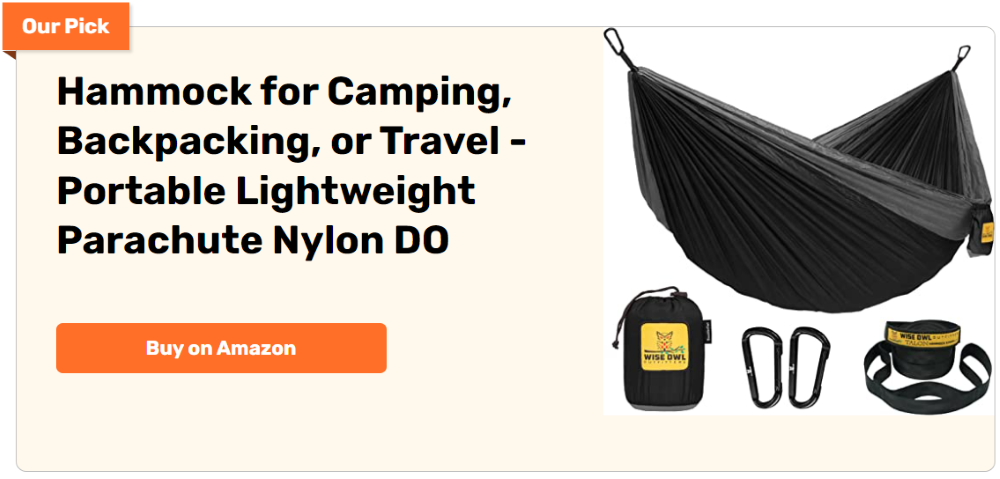
Hammocks have been around for centuries, with the first ones being created by the Mayan civilization. Today, they remain a popular choice for people looking for a relaxing way to enjoy the great outdoors. There are few things more peaceful than hanging in a hammock, looking up at the sky, and taking in the fresh air.
Whether you’re camping, hiking, or simply spending time in your backyard, hammocks offer a comfortable and convenient way to relax. They can be easily set up and taken down, making them perfect for on-the-go use. Additionally, hammocks are relatively lightweight and portable, so you can take them with you wherever you go.
Although the design of the hammock has remained relatively unchanged over the centuries, there have been some minor tweaks and improvements. This PVC hammock is a perfect example of that.
I recently came across this PVC hammock and was intrigued by the design. I have to say, I have never seen anything like it before. It is made out of PVC and looks quite uncomfortable at first glance, but it is actually quite comfortable.
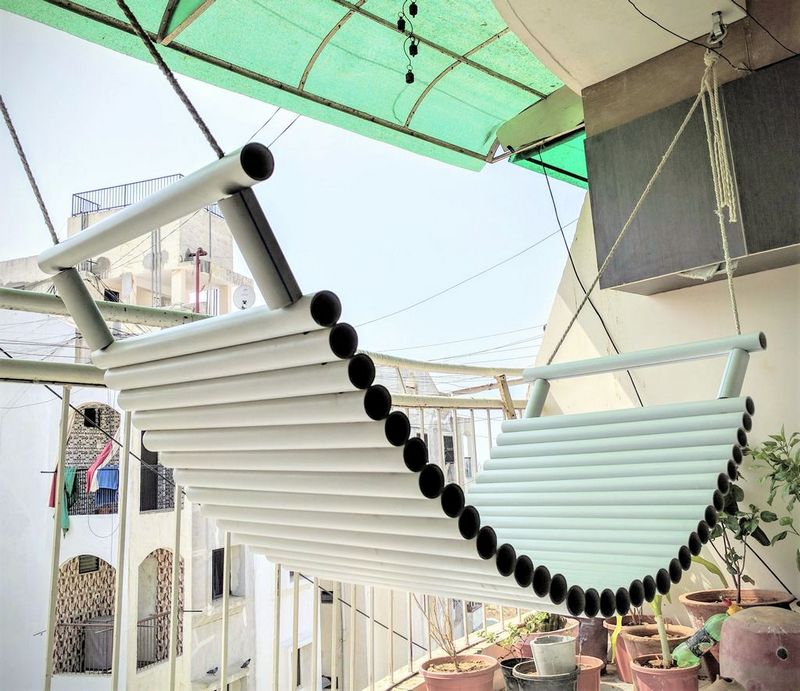
PVC pipes are not that expensive so making this hammock won’t cost you much. You have complete control over how many pipes you’ll use. Be sure it’s not too small for you. Hammocks should be comfortable, of course!
If you wish to build a PVC hammock of your own, you can easily do so with a few simple steps. This is a great project for anyone who wants to relax in their own hammock, and it’s not as difficult as it may seem. With a little time and effort, you can easily build your own PVC hammock that will provide you with a comfortable spot to relax. Plus, this is so useful and could be the perfect spot for you to chill out.
Contents
Crafting a PVC Hammock
Materials:
- PVC Pipes
- Rope
- (2) S-Shaped Hooks
- (2) Eye Hook Anchor (Eye Bolt Anchor)
Tools:
- Hacksaw
- Drill Machine
Steps:
Step 1: Plan and Measure
- Decide on the size of your hammock frame. A typical size is 6–7 feet long and 3–4 feet wide, but you can adjust based on your preference.
- Mark the PVC pipes with a pencil for cutting. You will need:
- Two long pipes for the frame’s sides.
- Two shorter pipes for the frame’s ends.
- Four smaller pieces for the legs (optional, if you want the hammock raised off the ground).
Step 2: Cut the PVC Pipes
- Use the hacksaw to cut the PVC pipes into the lengths you measured in Step 1.
- Smooth the cut edges using sandpaper to prevent sharp edges that might fray the rope.
Step 3: Drill Holes in the PVC Pipes
- Drill holes into the two long PVC pipes (the sides of the frame). Space the holes evenly, about 6–8 inches apart, starting a few inches from each end. These holes will be used to weave the rope.
- Drill holes in the shorter pipes (the ends of the frame) to secure them to the long pipes.
Step 4: Assemble the Frame
- Connect the pipes to create a rectangular frame using PVC connectors (if not included in the materials, purchase T-joints or elbows).
- Ensure all joints are secure, either by pushing them tightly or using PVC glue for added stability.
Step 5: Install the Eye Hook Anchors
- Screw the eye hook anchors into sturdy, overhead structures like a tree branch, pergola, or ceiling beam. Ensure the anchors are tightly secured to handle the hammock’s weight.
Step 6: Weave the Hammock Rope
- Begin threading the rope through the drilled holes in the long PVC pipes, weaving it back and forth to form the hammock’s base.
- Make sure the rope is tight and evenly spaced to provide a sturdy and comfortable surface.
- Knot the rope securely at each end to prevent slipping.
Step 7: Attach the S-Shaped Hooks
- Connect one end of each S-shaped hook to the eye hook anchors.
- Loop the other end of the hooks through the frame’s corners or securely tie the rope ends to the S-hooks.
Step 8: Test the Hammock
- Before using, test the hammock by applying pressure to ensure it can support your weight.
- Adjust the rope tension or resecure any loose components if necessary.
Step 9: Enjoy Your PVC Hammock
Settle in, relax, and enjoy the comfort of your DIY PVC hammock. Whether it’s in your backyard or a camping site, your handmade creation is perfect for lounging in the great outdoors!
Click on any image to start the lightbox display. Use your Esc key to close the lightbox.
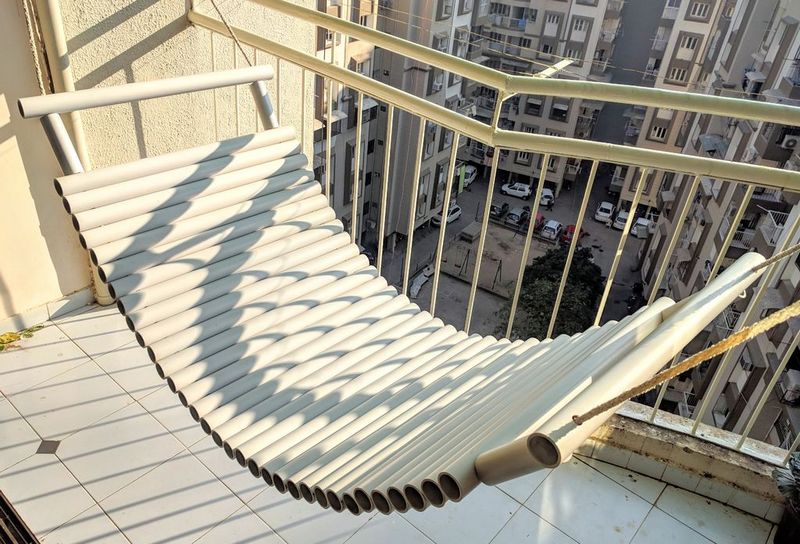
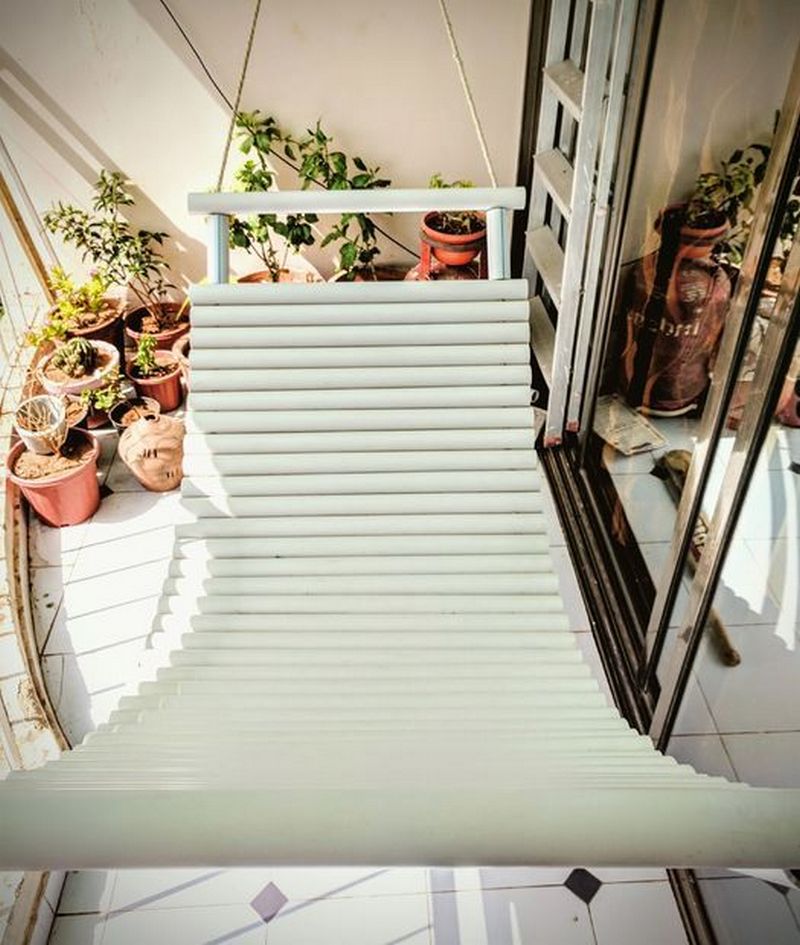
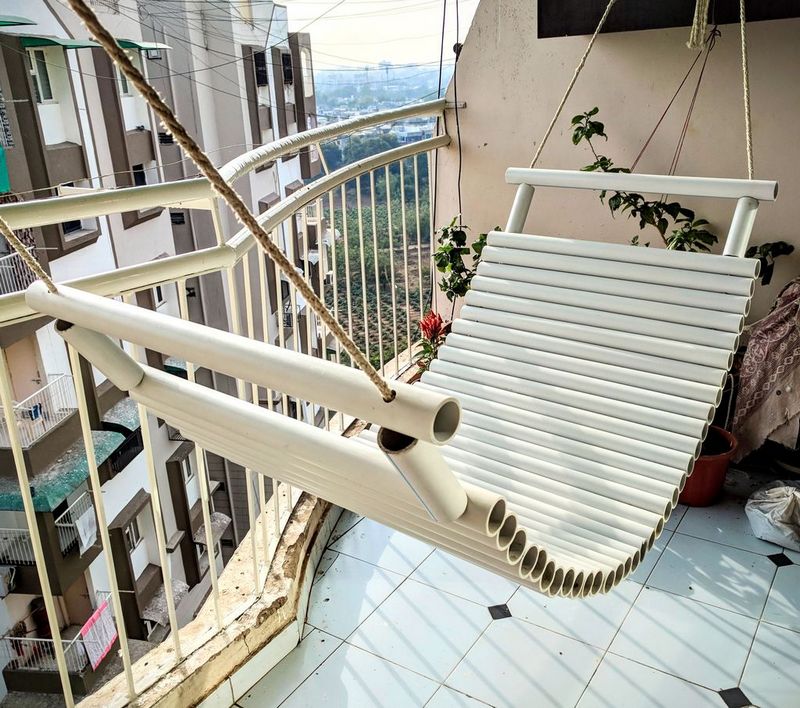


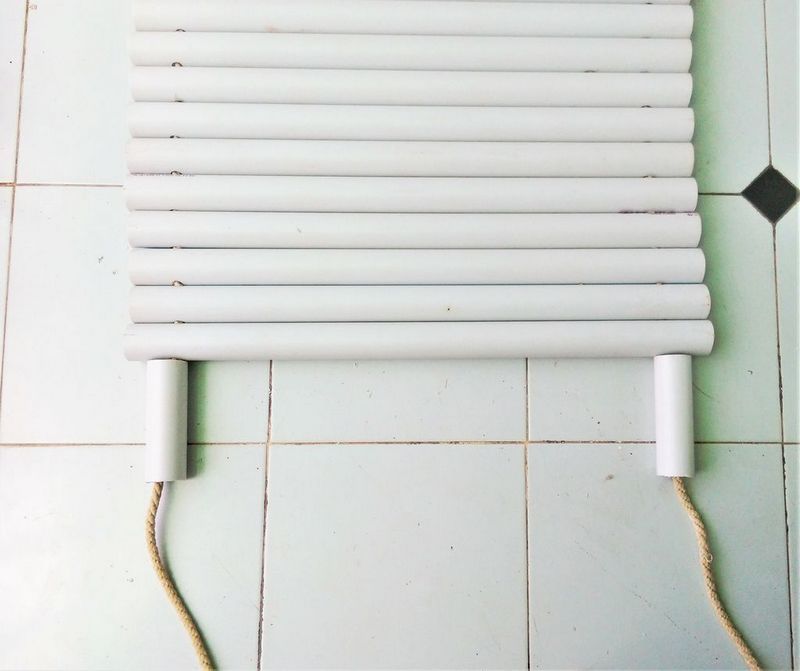
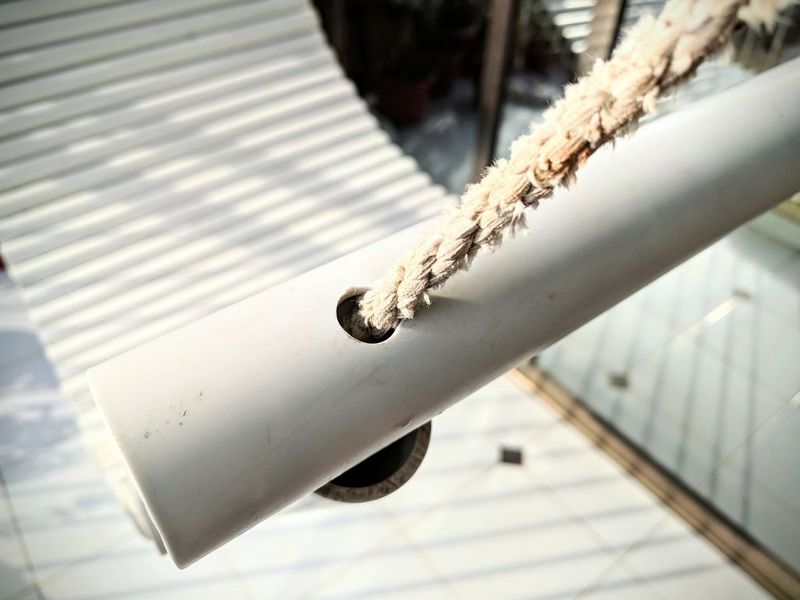
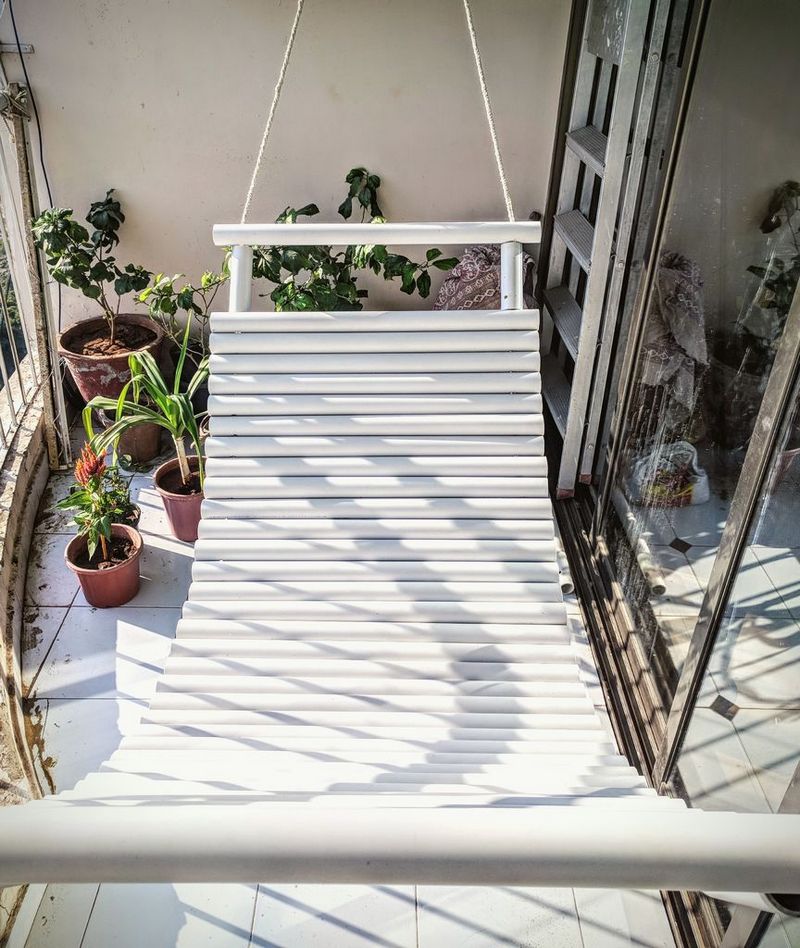

You can find a detailed tutorial on how to make this PVC hammock online. This hammock is a great addition to any backyard, and it’s easy to make with just a few pieces of PVC pipe. Once you have all of your materials, follow the instructions below to put your hammock together.
Thanks to Dev Prajapati for this great project. You can find more step-by-step instructions here…
Benefits of Using PVC for Hammocks
PVC hammocks provide a different take on classic hammock construction. Using PVC pipes as a structural material offers affordability, adaptability, and strength. Here are the main advantages of using PVC pipes should you be thinking about making your own hammock.
Cost-Effective and Budget-Friendly
Comparatively to other materials like wood or metal, friendly PVC pipes are far less expensive. For do-it-yourselfers wishing to manufacture a hammock without breaking the bank, this makes them a great option. PVC’s inexpensive cost lets you personalize the design free from concern about expensive materials.
Lightweight and Portable
PVC pipes are lightweight yet sturdy. This makes PVC hammocks easy to transport and assemble, whether you’re setting them up in your backyard, taking them to the park, or using them on a camping trip.
Durable and Weather-Resistant
PVC is well-known for resisting environmental elements like humidity, heat, and rain, as well as for custom hammocks, which are ideal for outdoor usage and can resist many weather conditions with less maintenance, unlike metal, which might corrode, or wood, which could decay.
Customizable and Versatile
Easy to cut, shape, and connect, PVC lets you design a hammock in any size or form fit for your needs. PVC pipes are a very flexible choice as you may paint or embellish them to fit your outdoor area or personal taste.
Simple to Assemble and Disassemble
Convenience is always considered in the design of PVC hammocks. Connectors allow the pipes to be readily constructed and broken apart when not in use. When you have to relocate your hammock or for seasonal storage, this function is quite helpful.
Eco-Friendly Options
Your hammock may be a green project if you utilize recycled or reused PVC pipes. In addition to cutting waste, this offers once discarded items fresh life.
Safe and Comfortable Design
For hammocks, PVC pipes give a strong and robust structure that guarantees safety when relaxing. Strong ropes and appropriate anchoring help the hammock to be a robust but cosy place for rest.
For everyone who enjoys do-it-yourself crafts and outdoor enjoyment, PVC hammocks are a great option since they mix utility with imagination. Their several advantages make them ideal complement to any outdoor environment.
Design Ideas for PVC Hammocks
PVC hammocks are a perfect blend of functionality and creativity. With PVC pipes as the main material, you can customize your hammock to suit your style, space, and needs. Whether you want a simple design for your backyard or a more elaborate setup for camping, PVC offers endless possibilities. Here are some design ideas to inspire your DIY PVC hammock project.
Classic Lounge Hammock
A classic lounge hammock is ideal for those who want a simple yet comfortable place to relax. Use PVC pipes to create a rectangular or U-shaped frame, and weave durable rope for the hammock’s surface. Add some cushions or a lightweight mattress for extra comfort. This design is perfect for your patio, backyard, or even a balcony.
Portable Camping Hammock
For adventurers, a portable PVC hammock is a fantastic option. Design it to be lightweight and easy to assemble. Use smaller PVC pipes that can be disassembled and packed into a bag. Ensure the hammock is sturdy by securing the joints with PVC connectors. This design allows you to take your hammock on hikes, camping trips, or beach outings.
Hammock with a Stand
If you don’t have trees or beams to hang your hammock, consider building a PVC hammock with a freestanding frame. Create an A-frame or rectangular base using PVC pipes and connect the hammock securely in the middle. This stand-alone design is versatile, letting you place your hammock anywhere without worrying about supports.
Double Hammock for Two
Why not make your PVC hammock big enough for two? A double hammock requires a larger and sturdier frame, but PVC pipes can handle the load if assembled correctly. Use reinforced PVC pipes with a thicker diameter and weave the rope tightly to ensure durability. This design is perfect for couples or parents who want to share a relaxing moment with their child.
Hammock Chair
A PVC hammock chair is a compact and stylish option for small spaces. Create a circular or square frame using PVC pipes and suspend it from a single anchor point. Add a cushion or fabric for seating, and you’ll have a cozy spot to read or unwind. This design works well indoors or in areas where space is limited.
Kids’ Hammock
Make a smaller, colorful PVC hammock specifically for kids. Use bright-colored ropes or paint the PVC pipes in fun colors to create an engaging and playful design. Safety is key for this design, so ensure the frame is low to the ground and securely fastened. Add a soft padding underneath as an extra precaution.
Hammock with Storage
Combine functionality and relaxation by incorporating storage into your PVC hammock design. Build a frame with a storage shelf or pockets underneath for books, towels, or other outdoor essentials. This idea is especially useful for poolside hammocks or those set up in your garden.
Weatherproof Hammock
For a hammock that can withstand all seasons, design a PVC hammock with weatherproof materials. Use UV-resistant PVC pipes and ropes, and add a water-repellent fabric for the hammock surface. This design is perfect for year-round outdoor use, ensuring your hammock stays in excellent condition no matter the weather.
Swing Hammock
A swing hammock combines the comfort of a hammock with the fun of a swing. Use PVC pipes to create a stable swing frame, and suspend a small hammock seat from the top. This design is great for kids and adults alike, offering a unique way to enjoy your outdoor space.
Themed Hammocks
Get creative and design a themed PVC hammock to match your personal style or outdoor decor. For example, create a nautical-themed hammock with blue and white ropes, or a boho-inspired design with macrame details. You can even add decorative elements like tassels or LED lights to make your hammock stand out.
Hammock Bed
If you want ultimate comfort, design a PVC hammock that doubles as a bed. Use a wider frame and add a full-size mattress or thick padding. This design is ideal for backyard naps or stargazing nights. Ensure the frame and rope can support the extra weight for safety.
PVC hammocks are not only practical but also incredibly versatile. With a little creativity and effort, you can design a hammock that fits your lifestyle and space perfectly. Whether you prefer a simple lounge hammock or a more elaborate setup, the possibilities are endless when using PVC pipes as your primary material. Let your imagination guide you, and enjoy the ultimate relaxation spot you create.
Conclusion
PVC hammocks combine practicality, creativity, and cost-effectiveness, making them an ideal choice for outdoor relaxation. With endless design possibilities, you can customize your hammock to fit your style, space, and needs. Whether it’s for lounging in your backyard, camping, or creating a fun space for kids, a DIY hammock is a project worth trying.
We have more hammock projects for alternatives to PVC. Check out our DIY grass hammock project!






